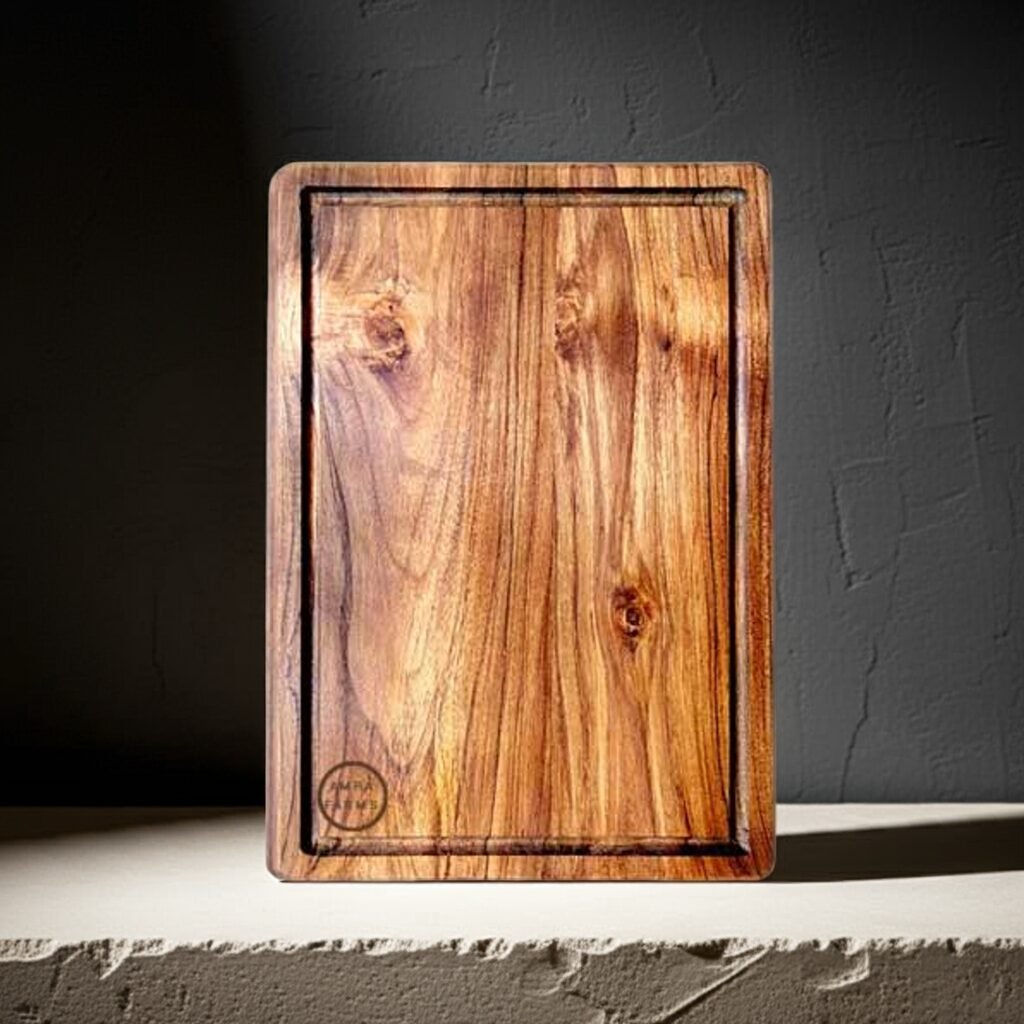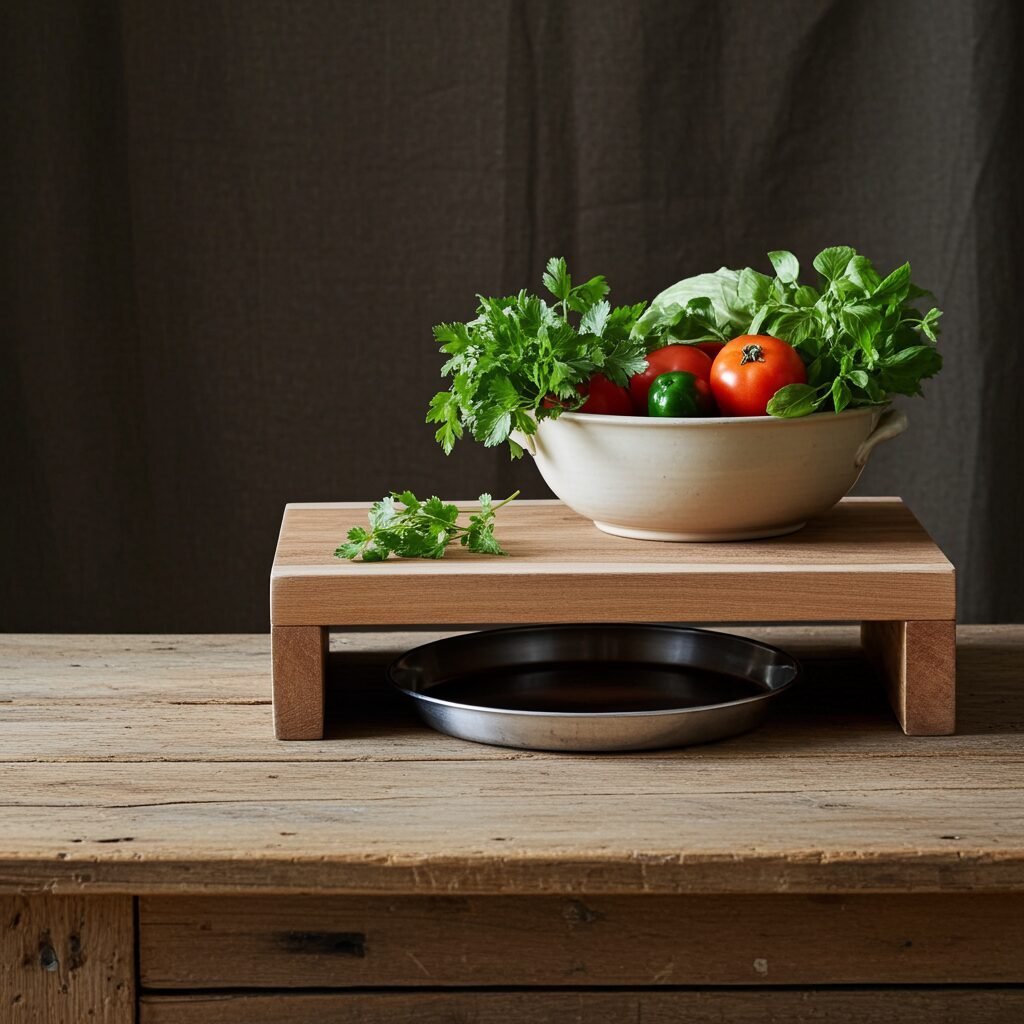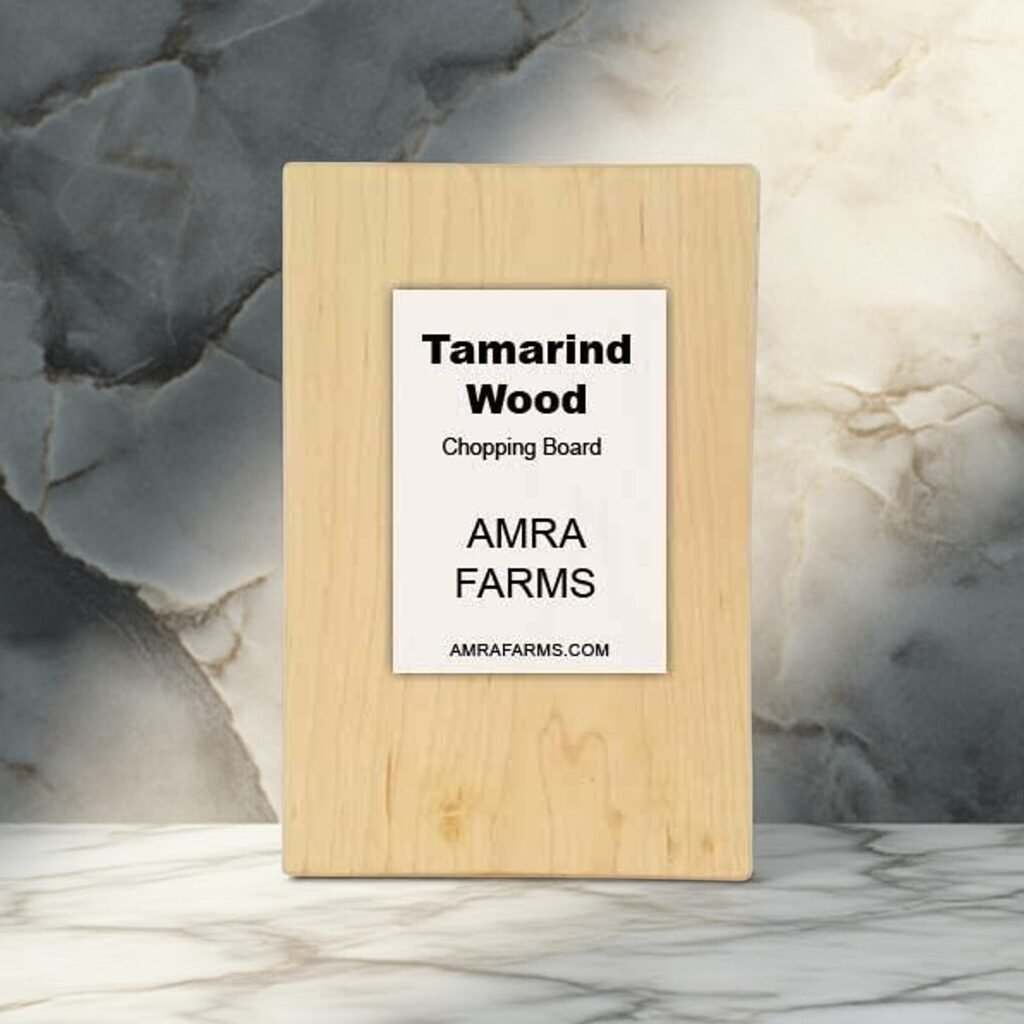Your cart is currently empty!
Wood vs Plastic Cutting Board – Which One Should You Choose?
Choosing between wood and plastic is often not that hard. Most people choosing a plastic cutting board are looking for a cheaper option. But did you know that wooden cutting boards can offer a safer alternative for relatively the same price? While you are using a plastic cutting board, you are just looking at the price. When you look at value, wood often outperforms plastic cutting boards in terms of money and also its usage.






Let me explain. A plastic cutting board will last you 6 months to a year with proper care. In one year, you often see scratch marks all over the surface, and its dark patches on the surface are often repelling to even look at. What’s worse is the health hazards it brings with it. Eventually, you will be forced to discard your plastic cutting boards in a year. Plastic cutting boards cost anywhere between 200-500 Rs in India. Assuming you use the board for a year, you will be spending roughly 1000 Rs every 5 years on a board. That’s not so bad when you think of it.
A wooden board will cost you anywhere between 1000 and 3000 Rs depending on the material. A medium-sized teak wood cutting board will cost roughly 1500. They will last 10 years and will look good in your kitchen too. Yes, they do have their own drawbacks. You need weekly maintenance on the board, which takes around 5 minutes, and every year, you can refurbish your board with sandpaper, which will take you 20-30 minutes. The results are always a brand-new board every year. What more? You can use your teak wood cutting board as a tray or a charcuterie board. You can serve food on it, and it’s always food-safe.
While plastic has its own benefits, wood often outperforms when it comes to value. Let’s take a look at each board’s benefits and drawbacks in detail.
Factors to Consider When Choosing a Cutting Board
The article considers the following factors when comparing wood vs plastic cutting boards. They include durability, bacteria resistance, knife friendliness, and maintenance, among others.
- Durability: While plastic may seem like the more durable option, wood outperforms plastic depending on the quality, variety, and construction of the board. End grain cutting boards are known to last more than a decade with proper care and maintenance, while a good quality plastic board will last 2 or 3 years at best. While plastic boards are sturdy, they wear out faster than wood and develop deep cuts and grooves on the surface, rendering the board unusable.
- Hygiene & Bacteria Resistance: When it comes to hygiene and bacteria resistance, plastic boards are easier to clean and sanitize, making them hygienic. But over time, with constant usage, plastic boards develop cuts which can harbor bacteria on the boards, making them hard to clean and causing health hazards. Wooden cutting boards, on the other hand, are known to be more resistant to bacteria with self-healing properties. The natural oil in the wood prevents bacteria build-up, and it takes the same amount of cleaning compared to plastic boards.
- Knife Friendliness: Plastic boards are known to dull knives faster than wooden boards. Wooden boards, though knife-friendly, are dependent on the wood quality and construction. End grain cutting boards are known to be more knife-friendly than edge grain cutting boards. Also, tough woods, which are stronger, tend to dull knives faster than softer ones. Mango wood, for instance, is soft on the knife, while teak is relatively tougher. No matter the type of wood, it is often a lot more knife-friendly than plastic.
- Maintenance & Cleaning: Maintenance of a plastic cutting board is minimal to none. Cleaning too is easy. Being dishwasher safe makes plastic cutting boards easy to clean and sanitize. You can remove stains with baking soda paste to some extent too. When it comes to wooden cutting boards, maintenance and cleaning are time-consuming. Wooden boards are hand wash only and not dishwasher safe. You have to wipe off food particles if you cut dry food and rinse in cold water if you cut wet food. Cutting vegetables and fruits will require you to rinse the board with diluted soap water. Always dry your board immediately after washing. A weekly oiling is required for a wooden board to retain its lustre and beauty. Do not ignore the maintenance of wooden boards. This will result in reducing the life of your board, and the board will lack the lustre.
- Aesthetic Appeal: Wooden cutting boards almost always take the upper hand when it comes to aesthetics. A good cutting board made from premium wood will outperform any plastic board. A cheap wood like mango with minimal grains too will look far better than a plastic board. You can use wooden boards as trays and charcuterie boards and not shy away from putting it as a centerpiece on your dining table. Plastic, on the other hand, is limited to its presence in the kitchen.
- Environmental Impact: Plastic boards are not renewable. While you may think that cutting trees will create an environmental impact, the residues that plastic leaves behind are far worse. Also, the trees cut down to create cutting boards are often what’s left off from making other furniture, and these trees are often cultivated for the timber and replanted once they are cut, creating a balance in the environment.
Wood Cutting Boards
Wooden cutting boards are the favourite among professional chefs and home cooks. The aesthetics of a wooden cutting board make it attractive, while the features are perfect for cutting vegetables and meat, making it safe and durable at the same time. The quality of wooden boards depends on the wood used. Woods like teak are known for their beauty and durability, while mango wood is known for its functionality, rustic looks, and lightweight. Every wood has its own characteristics, and understanding the character of the wood helps you determine the right wood for the job. If you are looking for a wooden cutting board on a budget, mango wood cutting boards offers all the best features at the best price. The wood has beautiful patterns that are emboldened over time. Teak, on the other hand, is heavy-duty and perfect for a luxurious appearance. They are durable and can last years. The price for a teak wood cutting board varies from 1500 to 3000 INR.
When compared to plastic, wood is more durable and eco-friendly, but it is expensive and requires a bit of maintenance.
Plastic Cutting Boards
Plastic is one of the most common cutting boards available in the market today. Being affordable and functional makes it one of the desired products for home users. Restaurants and professional kitchens are also required to use colour-coded plastic boards in various countries to meet food safety standards. Plastic boards are easier to clean and sanitize, making them one of the preferred choices. Also, there is minimal maintenance. Being non-porous ensures plastic boards are safe and do not cross-contaminate food in large kitchens. Unfortunately, plastic boards wear out rapidly and develop deep grooves in the surface, which lodge food particles and bacteria over time. This can only be remedied by replacing a board every 6-8 months in a professional kitchen.
It’s also important to understand the types of plastic used. HDPE and polypropylene are two types of plastics used in creating cutting boards. HDPE is stronger, more durable, and resistant to moisture absorption, while polypropylene is softer, lightweight, and dishwasher safe. HDPE is known to dull knives faster than polypropylene, but polypropylene plastic is not as durable and is good for home use only.
Plastic boards are dishwasher safe, easy to handle, and lightweight. Available in various colours, they are good for food safety segregation in professional kitchens. Being lightweight, durable, and easy to handle, the boards are also easy to store. The downside to plastic boards is that they can dull knives faster, especially the HDPE versions. When it comes to food safety, plastic boards are good for up to 6 months to a year but should be replaced once the surface is dirty and has deep knife marks.
Hygiene & Food Safety Considerations
For years, people have been made to believe that plastic boards are safer than wooden cutting boards. Recent research indicates that wooden cutting boards are more resistant to bacteria and safer for use than most plastic boards in the market. Research indicates that wooden cutting boards trap bacteria and kill them in a few minutes. Some research indicates that bacteria on the surface of wood, like teak, are killed in less than 10 seconds. Plastic boards, on the other hand, tend to have bacteria on the board even after washing them, especially those with deep knife grooves. Hardwood like teak, with a tight grain structure, is resistant to bacterial penetration, and its oil content ensures that the bacteria are killed once they come into contact.
Plastic boards, on the other hand, are easier to clean and sanitize. They are dishwasher safe and can be sterilized with hot water. Unfortunately, even hot water sometimes does not kill all the bacteria on the surface of a plastic board if they have deep grooves. Research from the University of Wisconsin found that bacteria applied to wooden cutting boards became undetectable in a few hours, while they survived on plastic boards for longer. Research from the Journal of Food Protection also indicates the harmful effect and bacterial presence in boards that had knife marks in them. The USDA recommends replacing cutting boards once they are heavily scored.
Wooden boards or plastic boards both require cleaning. The process may be a bit different for each, and while plastic boards are dishwasher safe, they are definitely easy to clean. Disinfecting a wooden board is usually a natural process with the use of lemon and salt scrub. On a plastic board, you can use hydrogen peroxide or a baking soda paste to remove stains. Wood definitely requires extra care with oiling every week to ensure that the oil content is retained in the wood to prevent warping and cracking.
Which One is Better?
| Feature | Wood Cutting Board | Plastic Cutting Board |
| Durability | Long-lasting with care | Needs frequent replacement |
| Hygiene | Naturally antimicrobial | Can harbor bacteria in deep cuts |
| Maintenance | Requires oiling, careful drying | Easy to clean, dishwasher safe |
| Knife Friendliness | Gentle on knives | Can dull knives faster |
| Aesthetics | Premium, rustic look | Functional, but less attractive |
| Price | Generally more expensive | Budget-friendly |
| Eco-Friendliness | Biodegradable, sustainable | Non-biodegradable, less sustainable |
Conclusion – Which One Should You Choose?
Choose a plastic cutting board if you intend to replace it every 6 months and if you are on a tight budget. Wooden boards are not for beginners and require that extra care. If you are one of those who do not have the time to maintain a wooden board, you should avoid purchasing them. Wooden boards are definitely more expensive but offer the beautiful looks and aesthetics a plastic board cannot. Be sure to clean the board whichever one you choose, and if you plan to purchase a plastic board, ensure that you change them every 6 months or when they are scarred on the surface.
Reference : https://pubmed.ncbi.nlm.nih.gov/37220346/
Categories
Products
- Buy Wooden Vegetable Cutting Boards Online
- Wooden Kitchen Accessories Tools
- Buy Butcher Block & Meat Cutting Boards Online
- Buy Premium Edge Grain Single Block Wooden Chopping Boards Online
- Buy The Best Teak Wood Chopping Boards Online In India
- Buy Wooden Cutting Boards With Handle For Kitchen
- Mango Wood Chopping Boards
- Single Block Chopping Boards
- Tamarind Wood Chopping Boards
- Wooden Platter Boards , Pizza Platters & Charcuterie Boards
Tamarind Wood Cutting Board Teak Wood Cutting board
Recent Posts
- Unique Wooden Chopping Boards with Medicinal Benefits
- Exotic Woods of India and Its Uses
- Best Uses of Teak Wood: Common and Unique Applications That Make It the King of Hardwoods
- What to look for when purchasing a teak wood cutting board and how to identify teak wood
- Wooden chopping boards that naturally resist fungus/mould growth
